Thomas was the fifth of nine children.
What we know about Thomas' life


He was nineteen years old. Thomas could read and write. Thomas was unmarried. He was a miner.
His final destination was Glace Bay, presumably to work in the coal mines as most of the other men on the page who were going there were also miners.
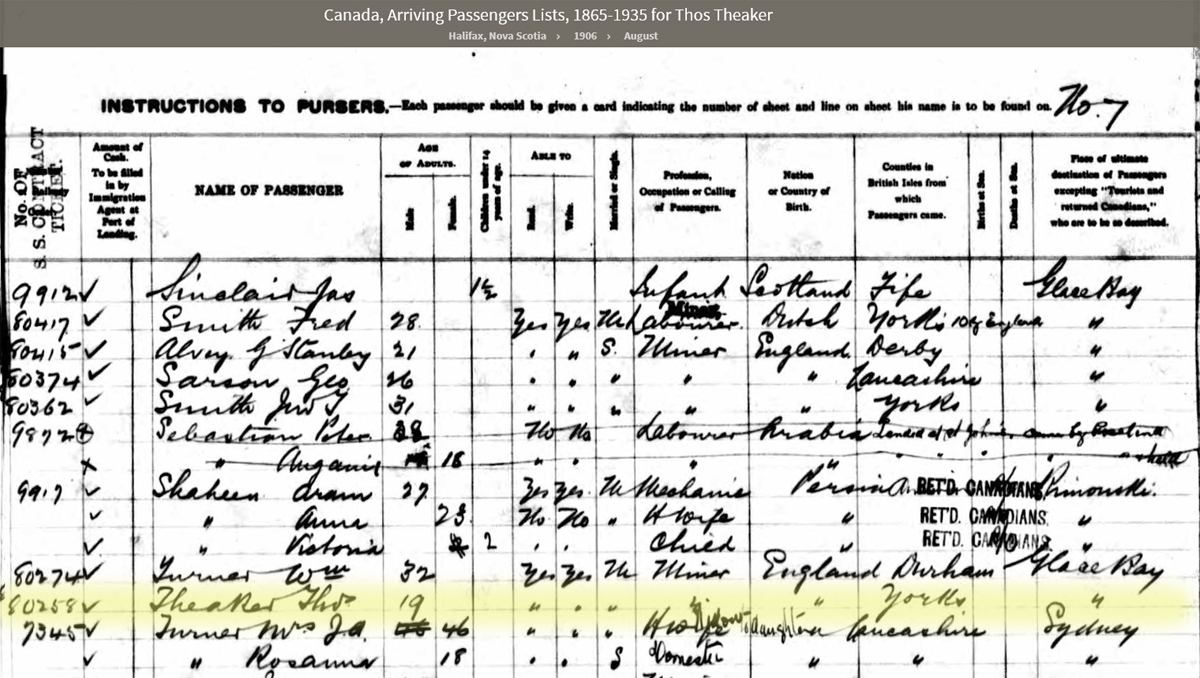
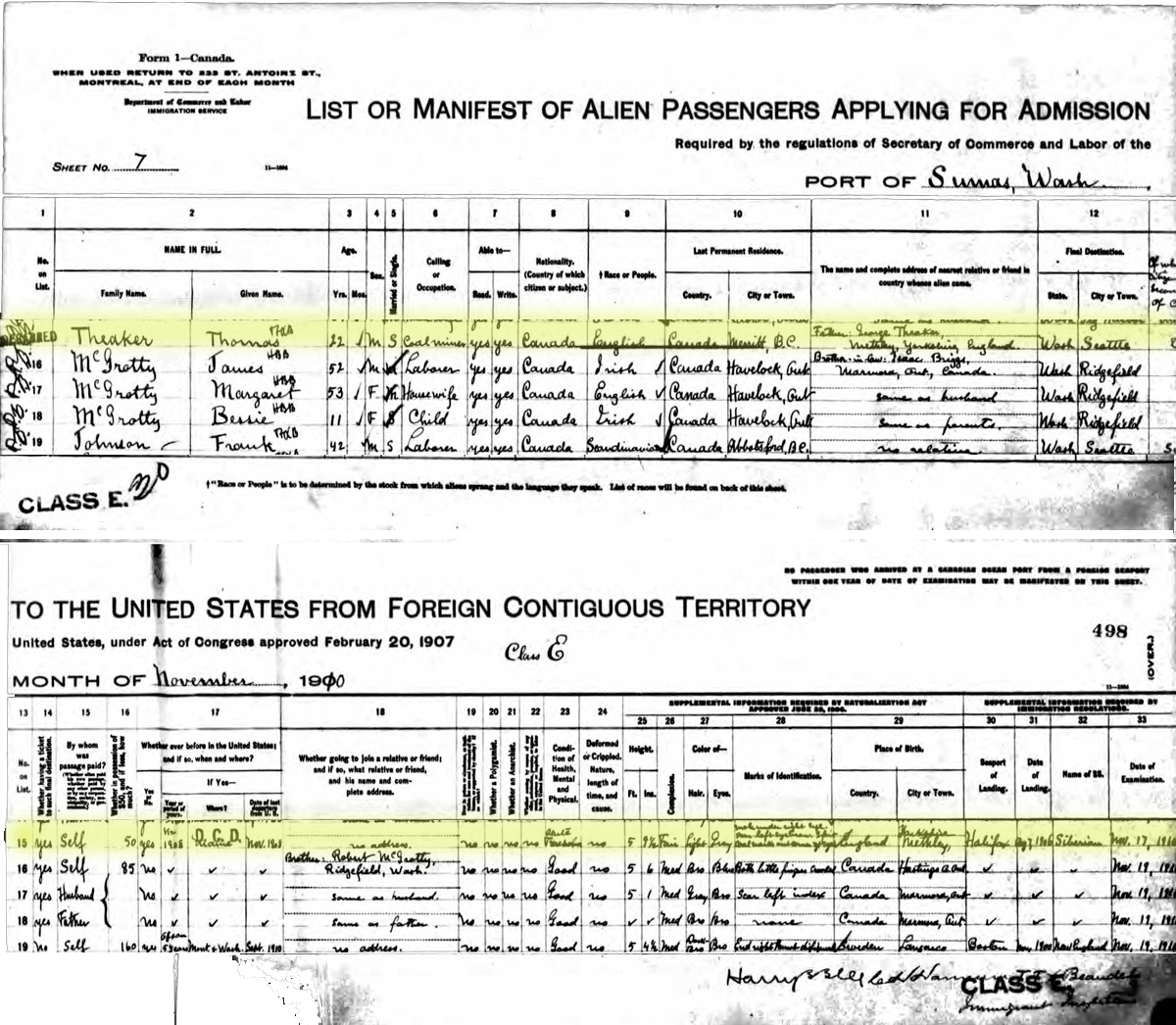
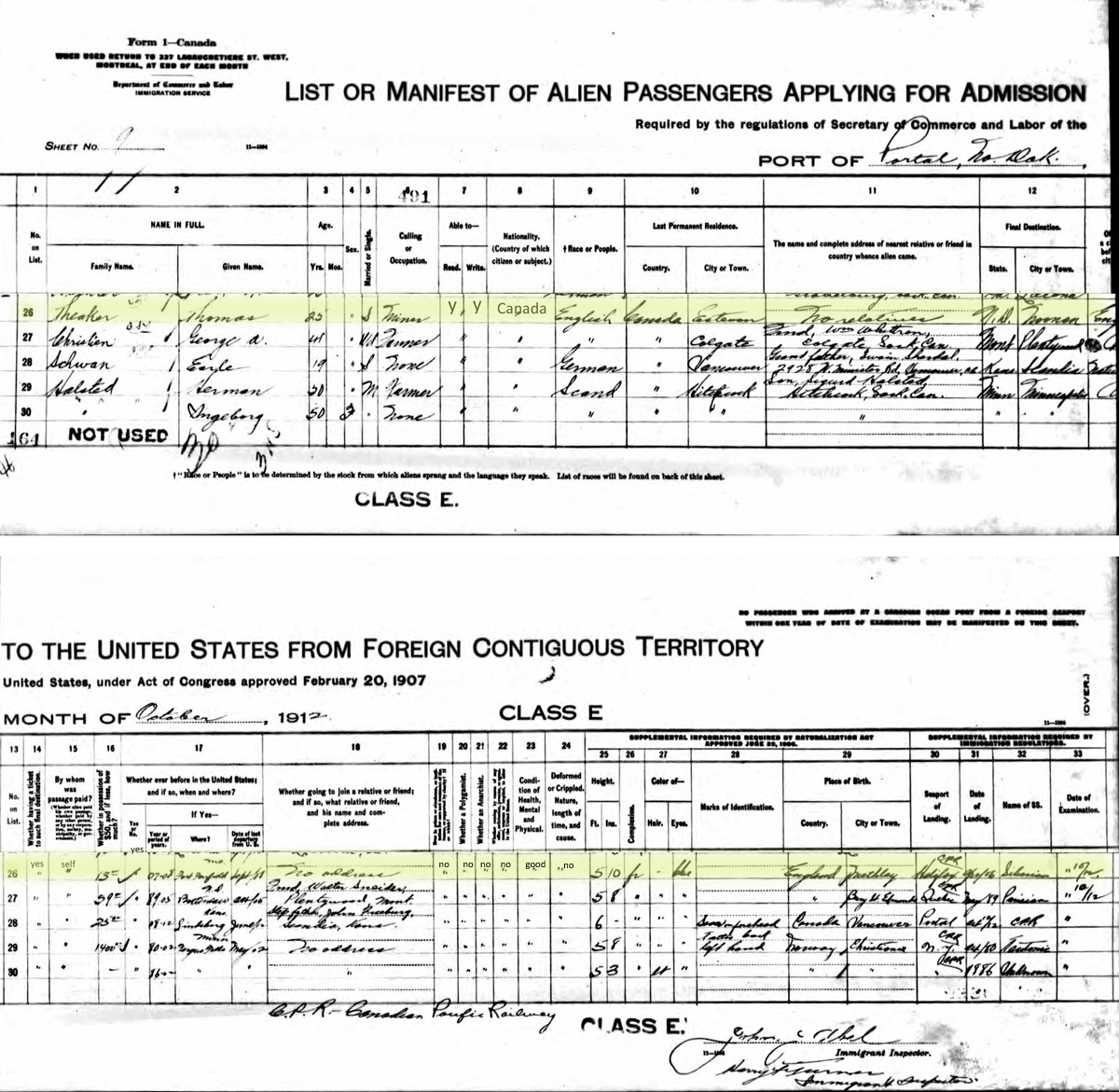
Thomas enlisted in the Canadian army at Weyburn, Saskatchewan on the 23rd of December, 1914. He joined the 46th Battalion. On the 14th June 1916 he was transferred to the 31st.
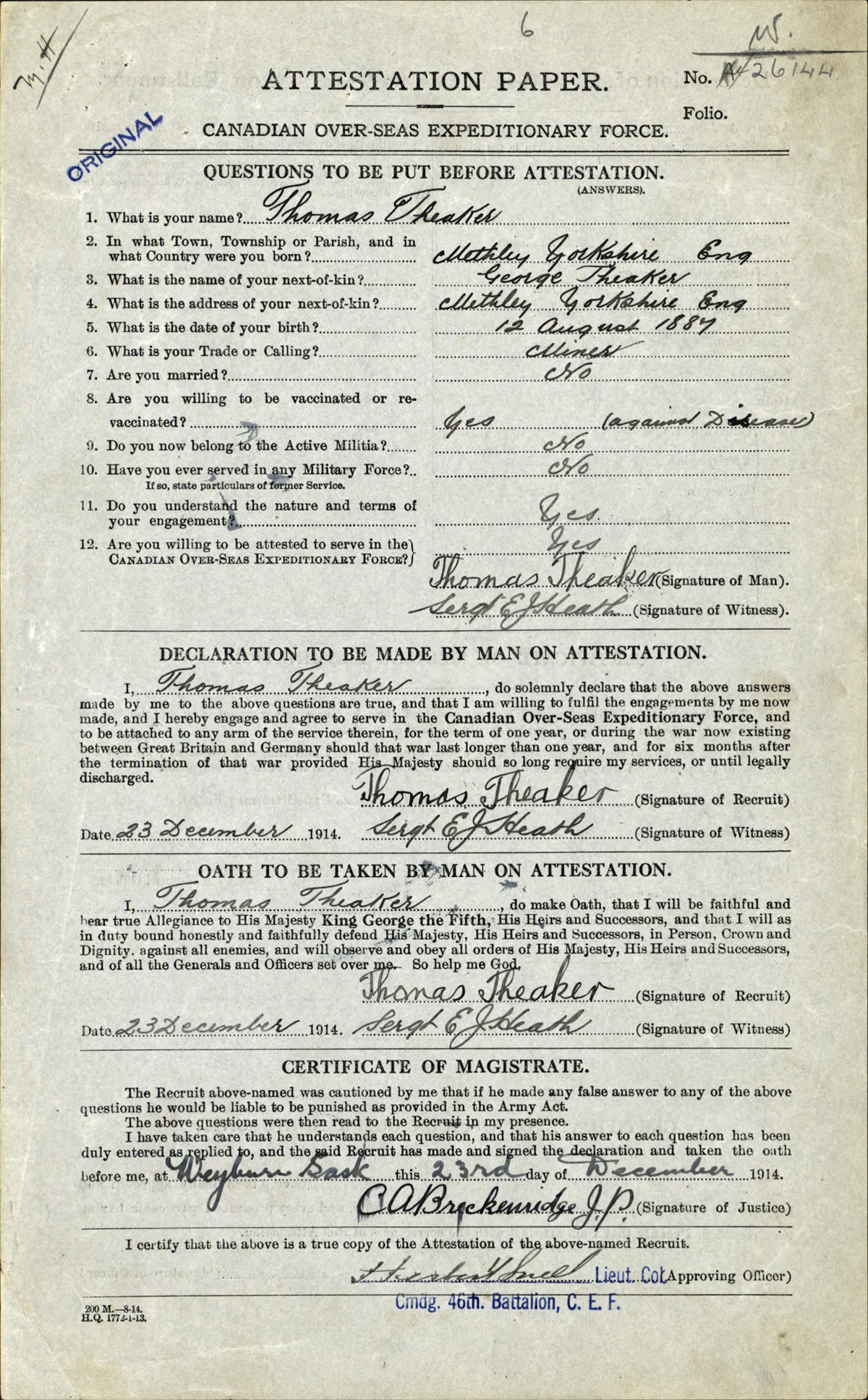
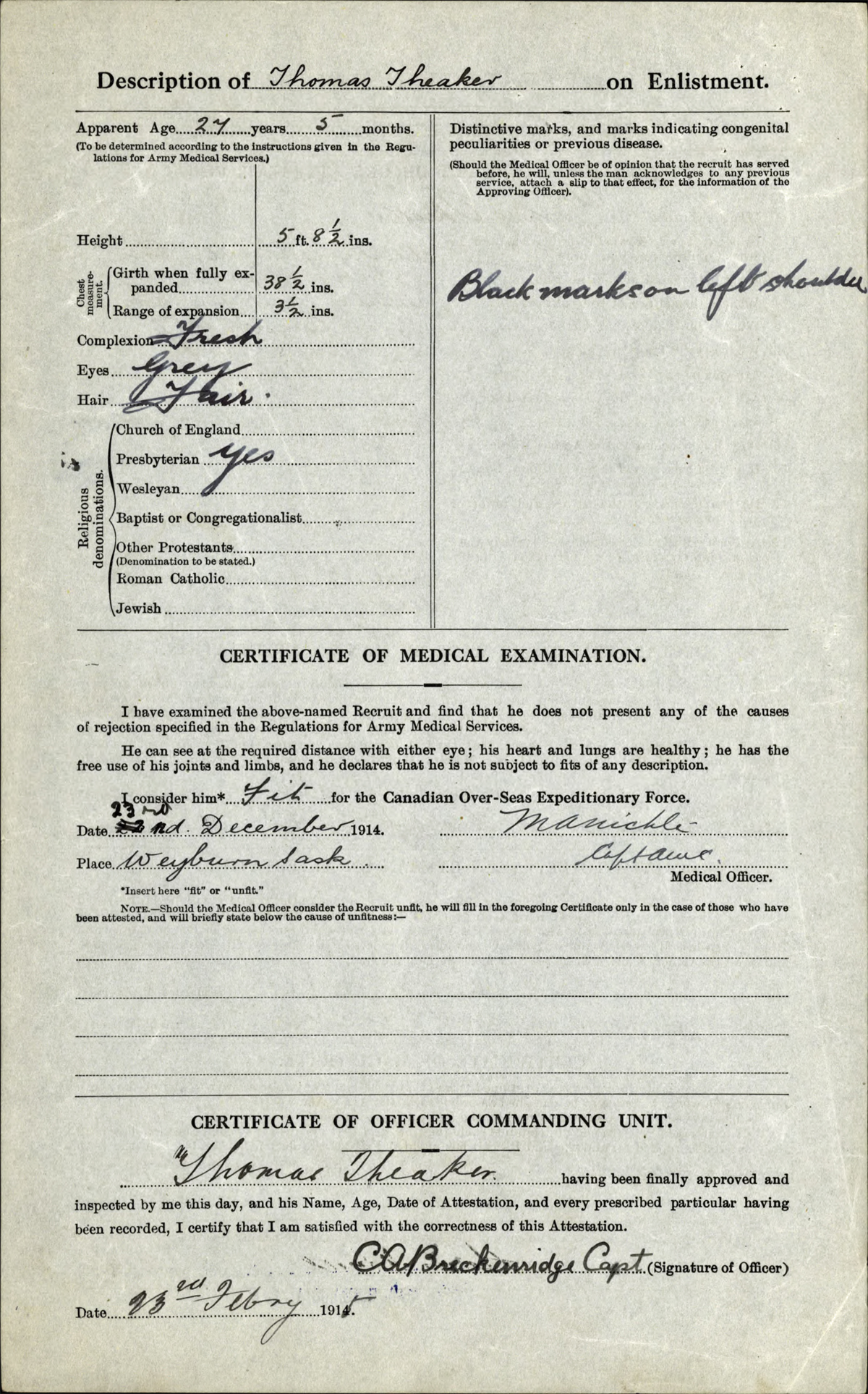
Thomas sailed from Halifax on the SS Lapland on the 23rd October 1915.
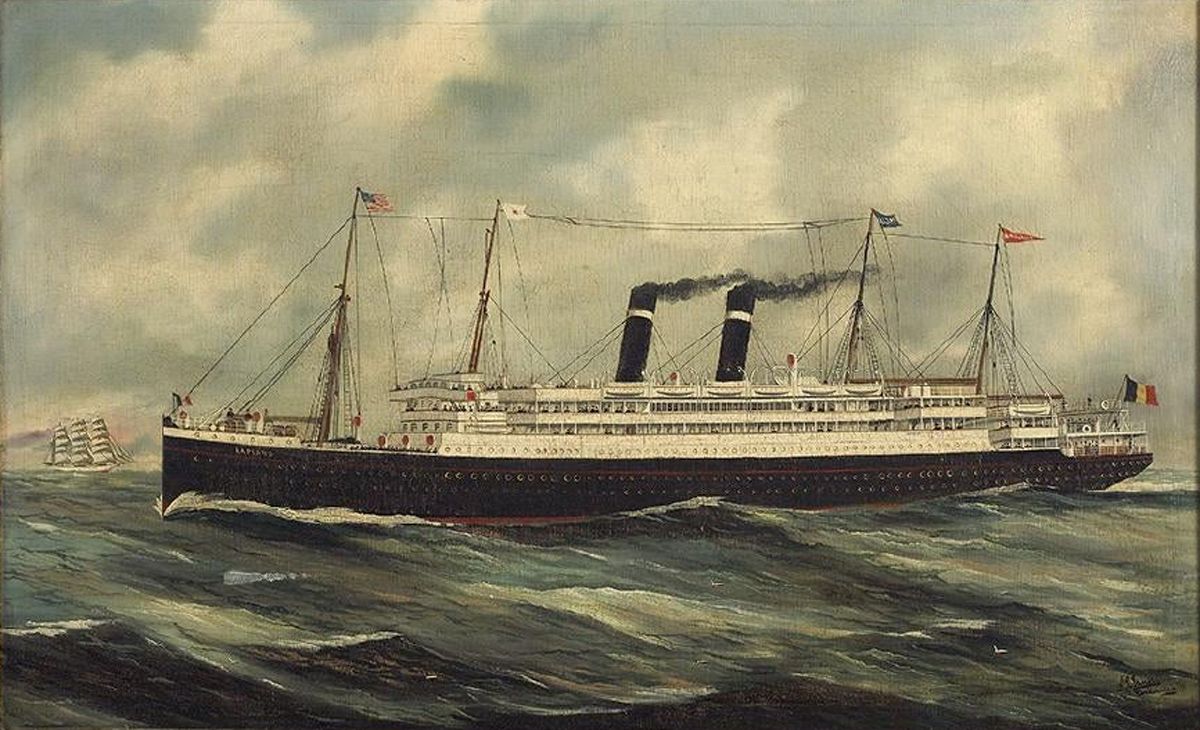
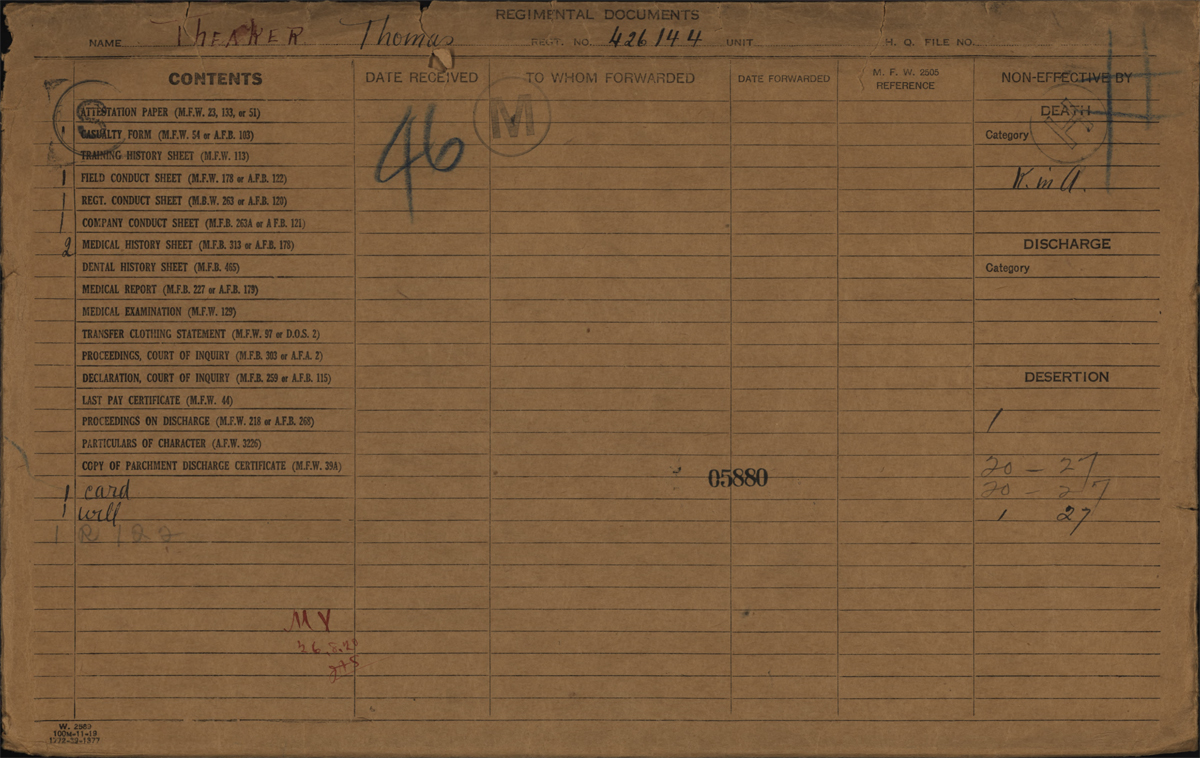
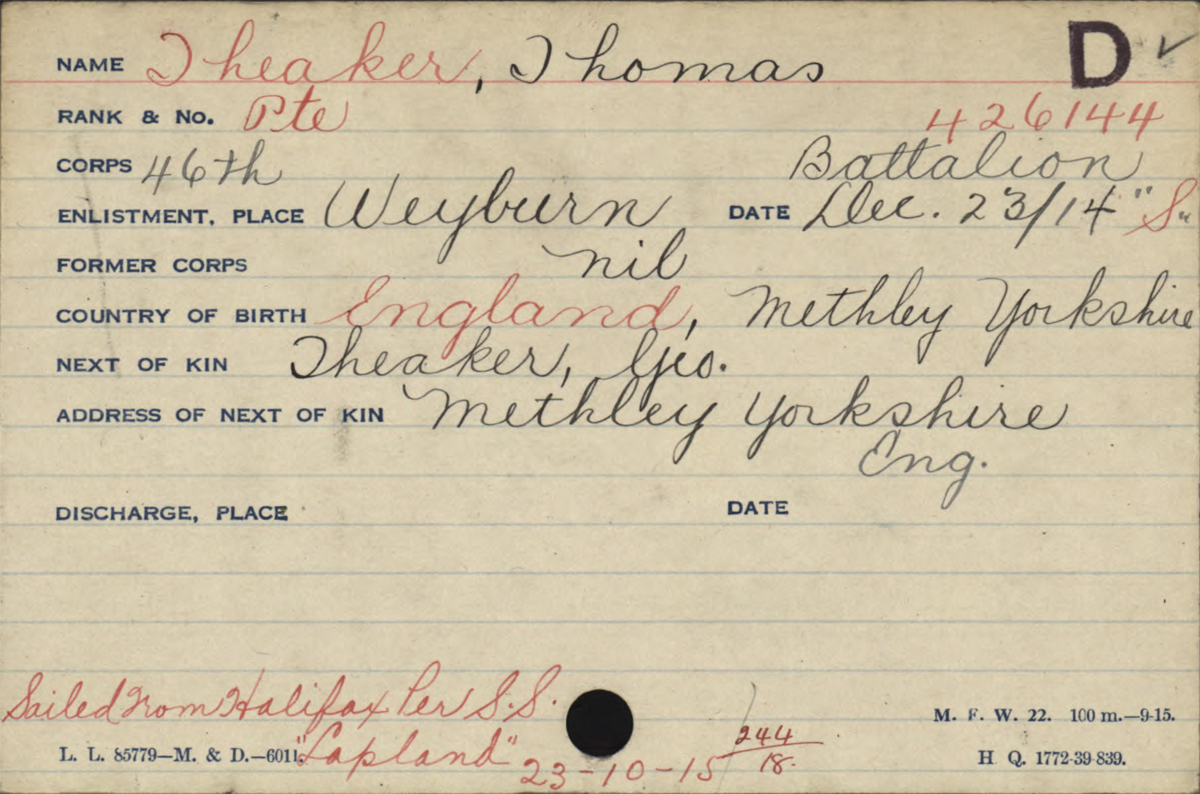
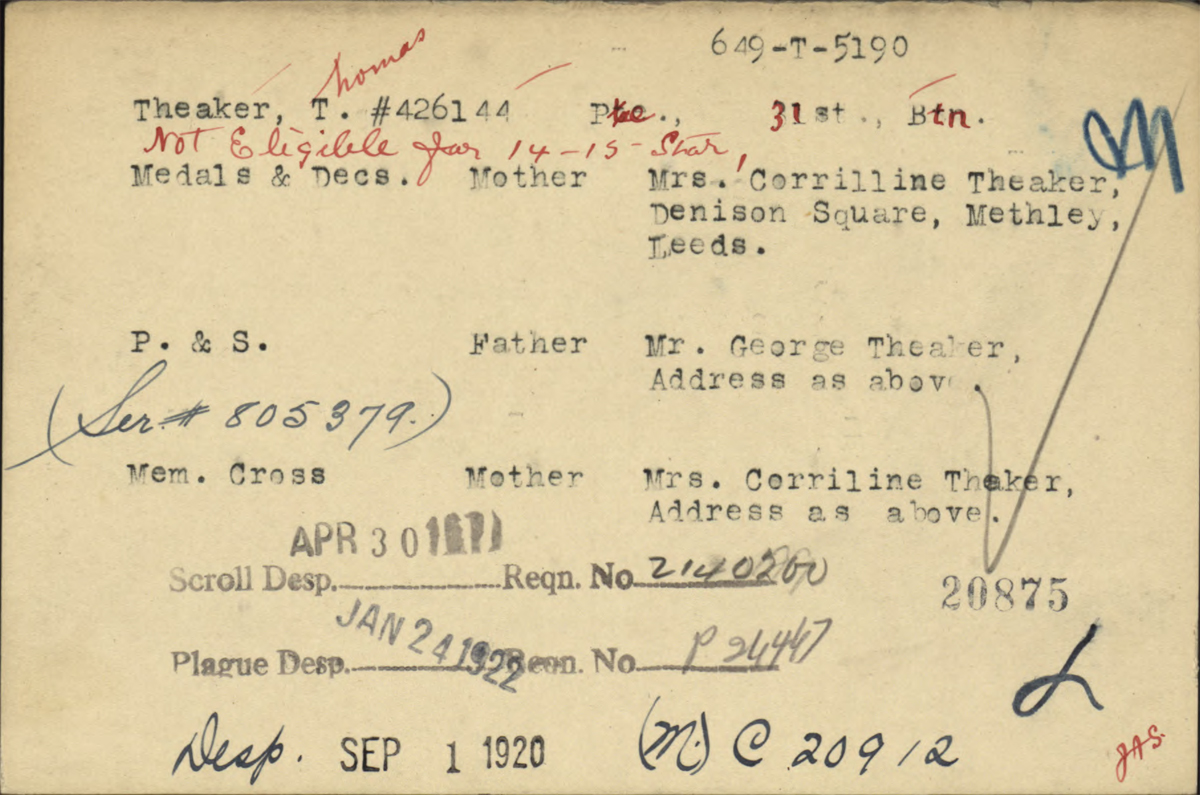
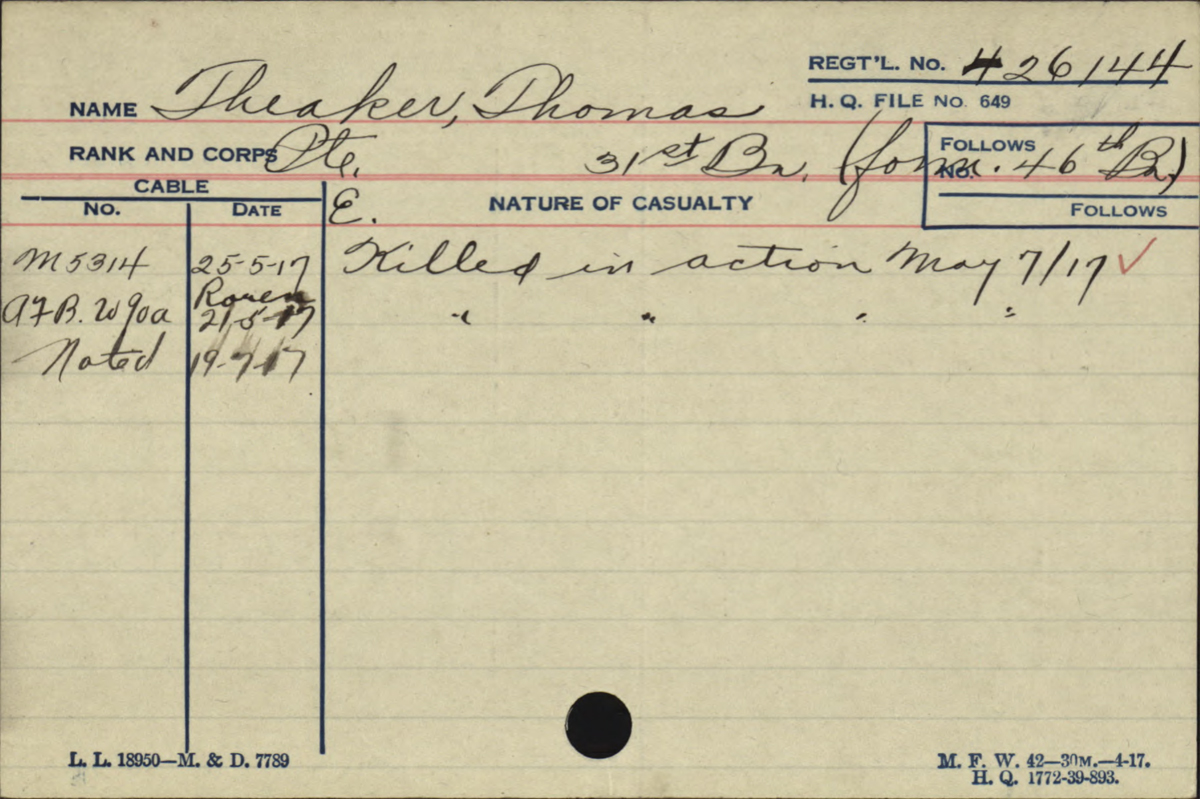

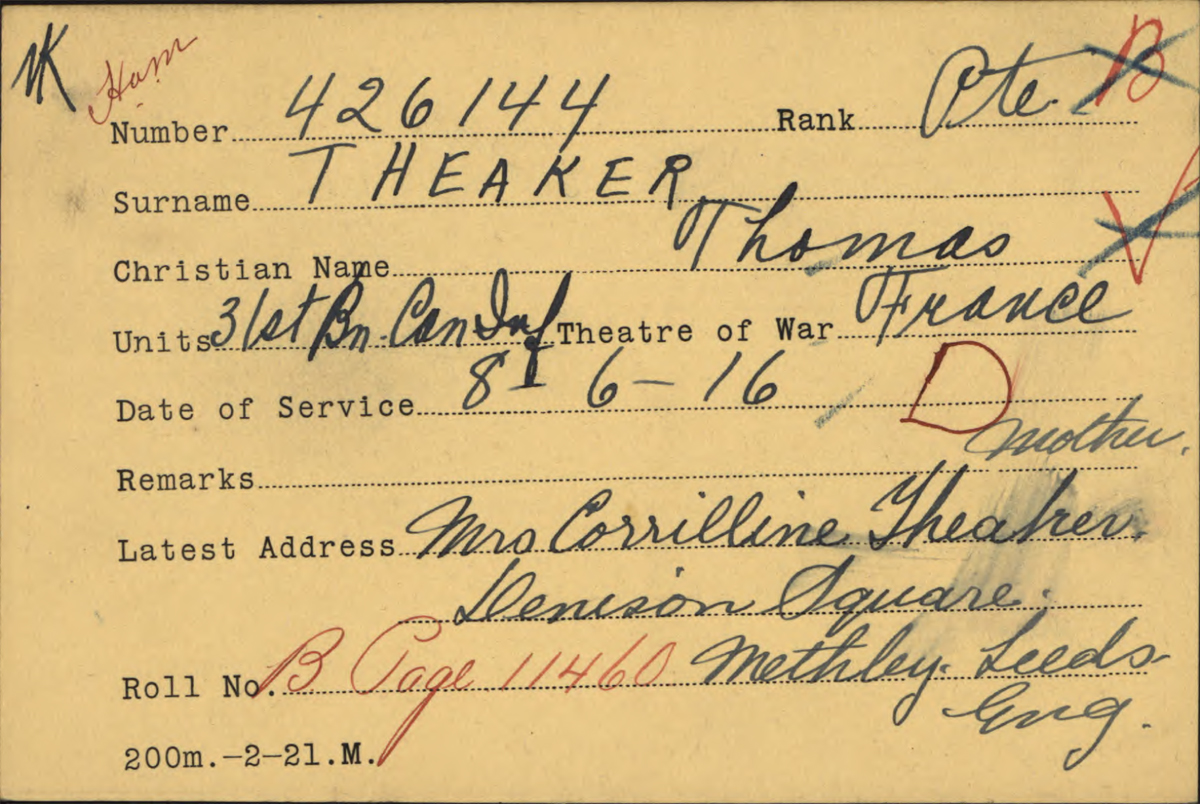

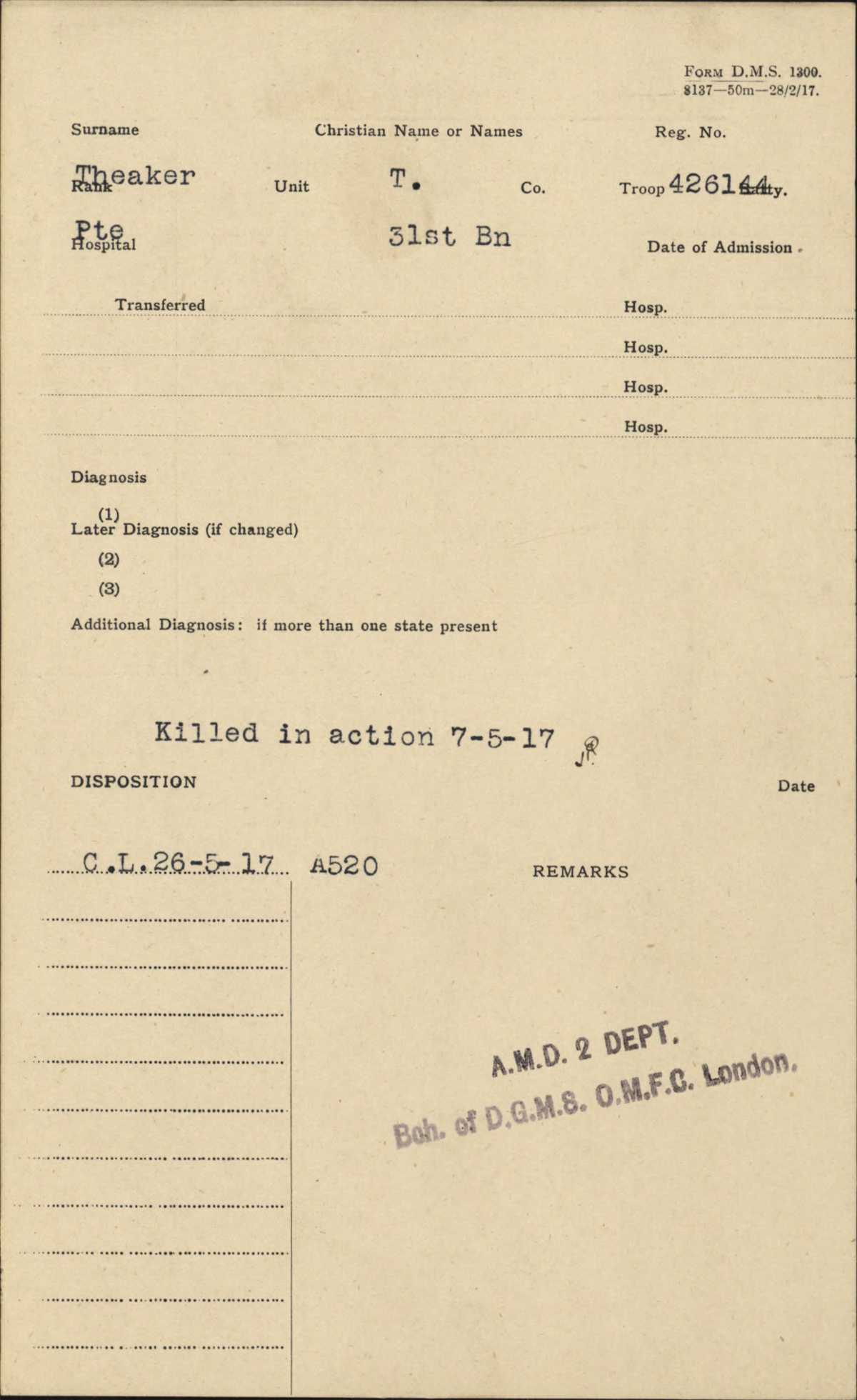
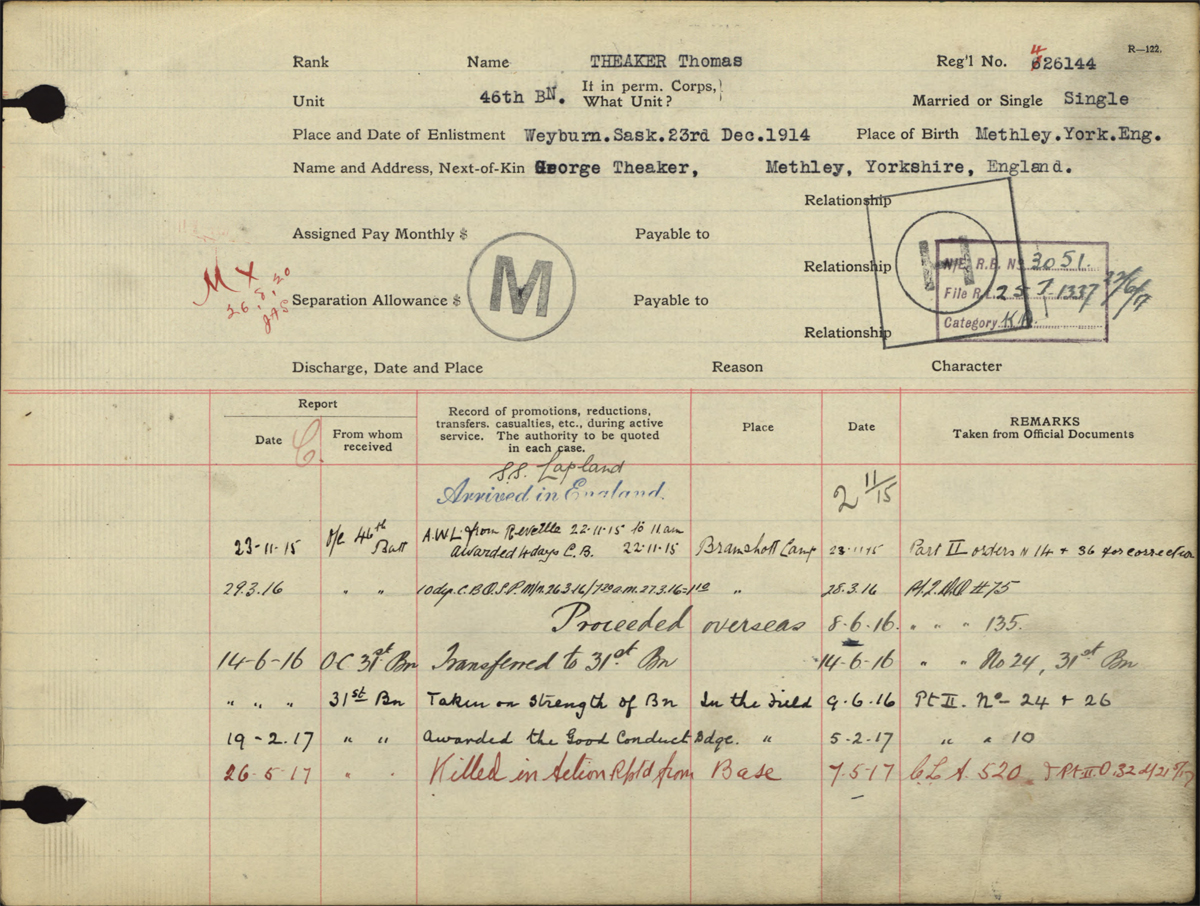
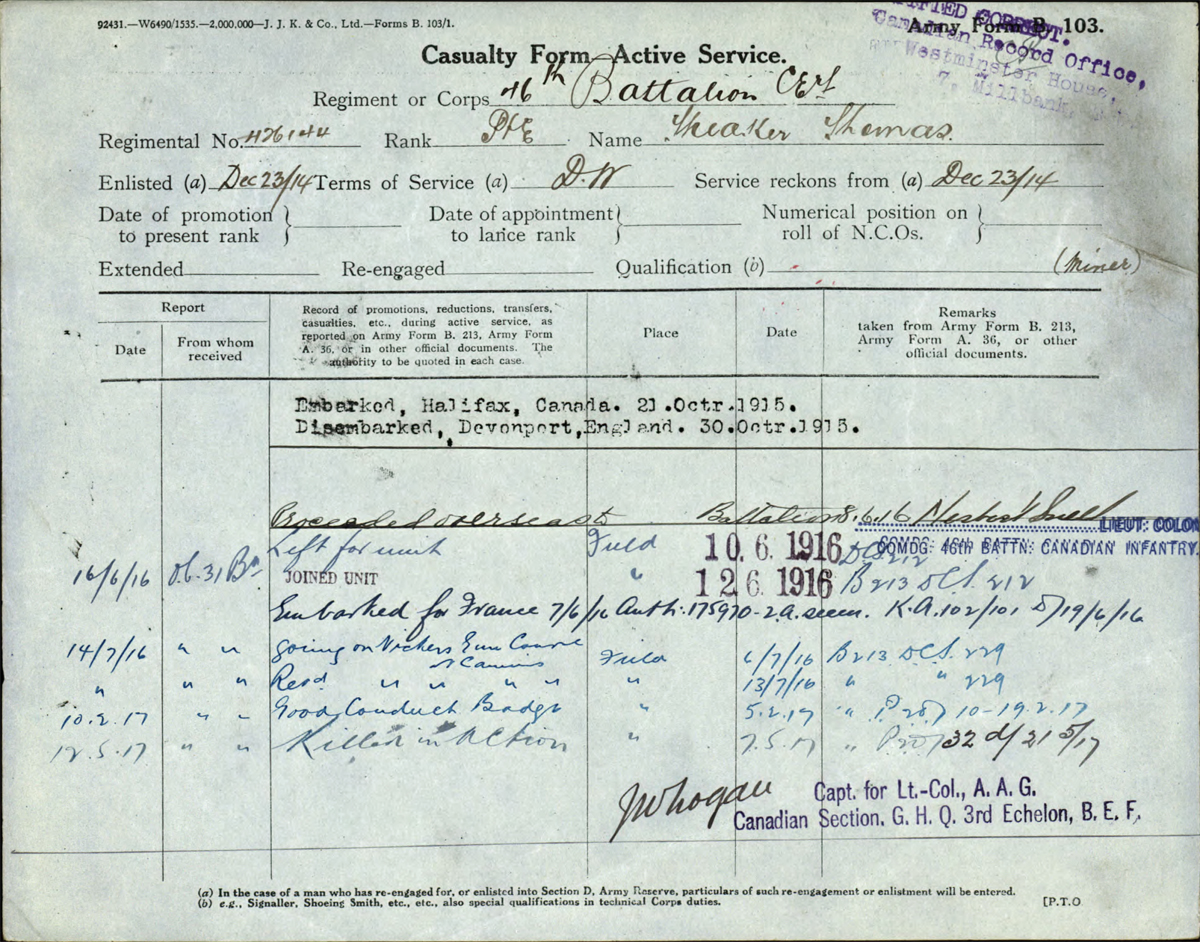
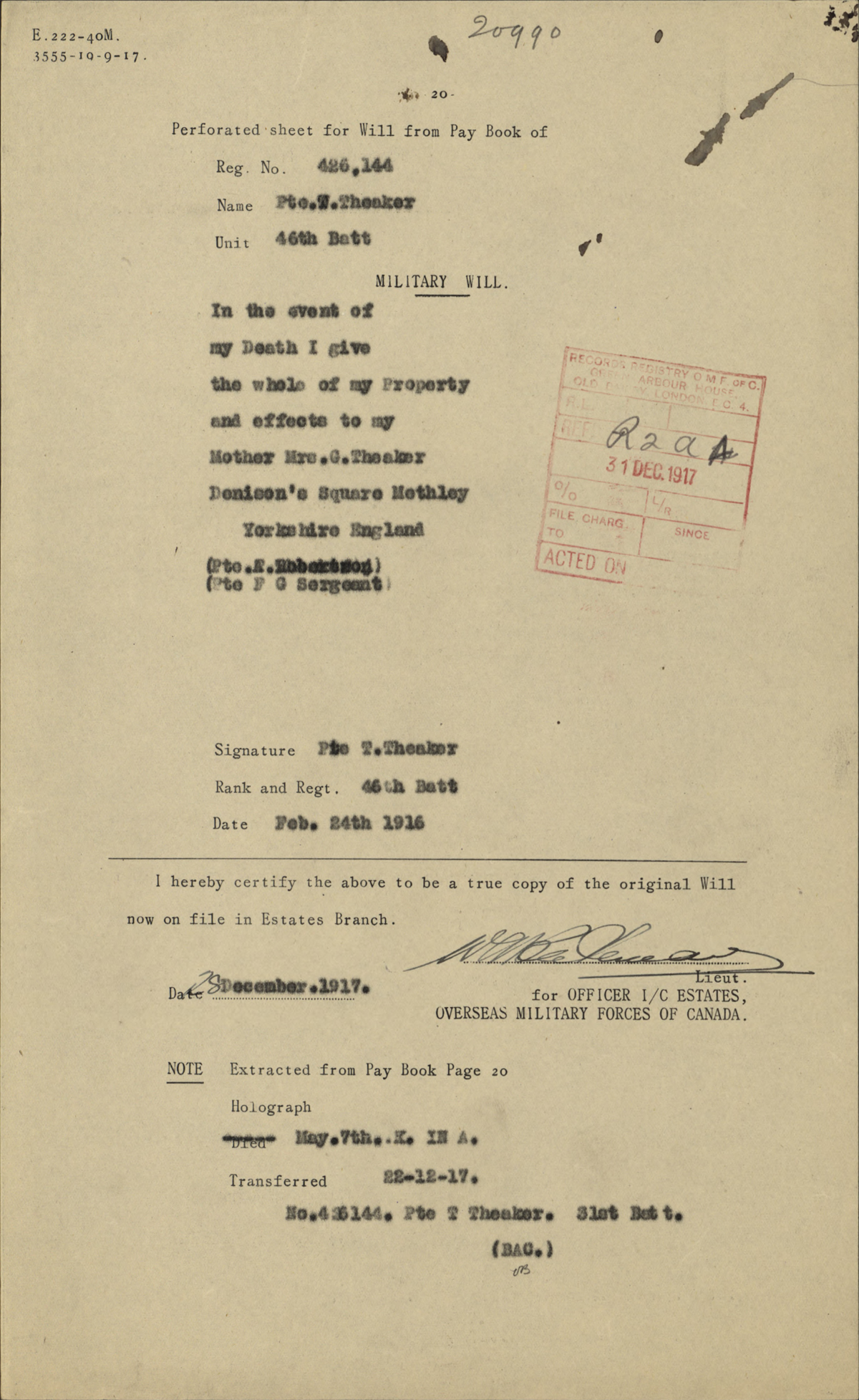
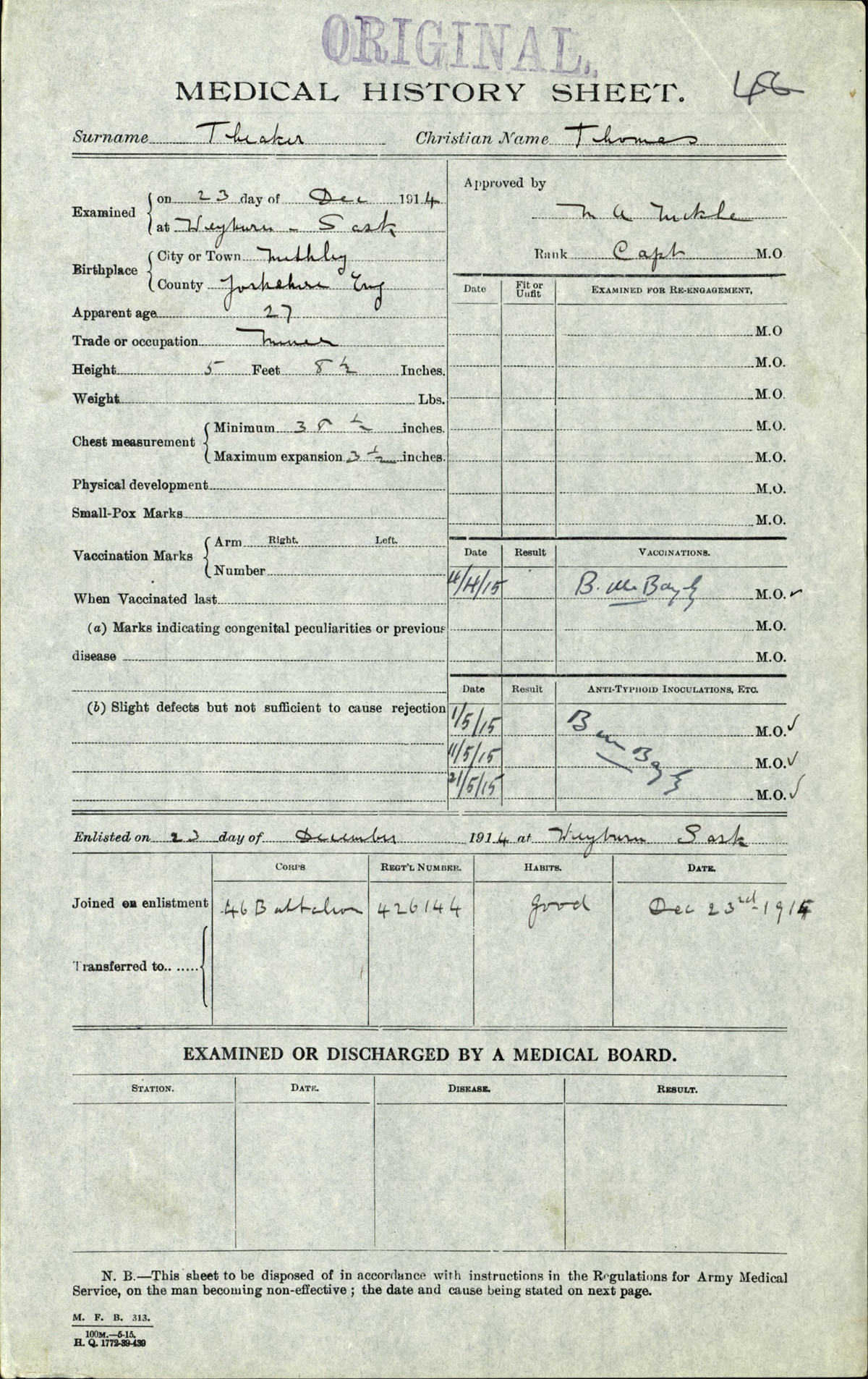
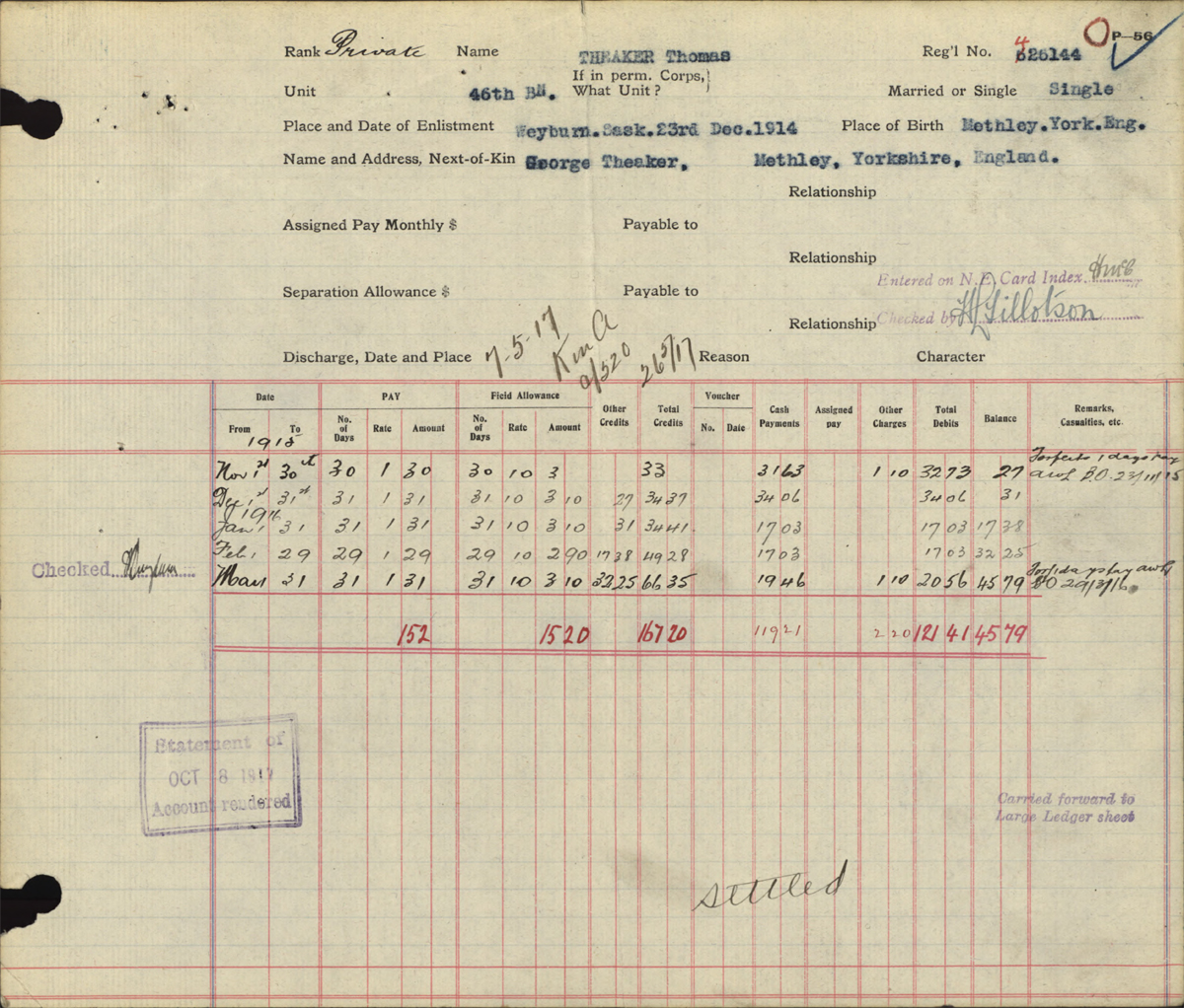
In Memory of
THOMAS THEAKER
Private 426144
31st Bn., Canadian Infantry (Alberta Regt.)
who died on
Monday, 7th May 1917. Age 29.
Son of Mr. and Mrs. G. Theaker, of Denison Square, Mickletown, Methley, Leeds, England.
Commemorative Information
Memorial: VIMY MEMORIAL, Pas de Calais, France
Location:
Canada's most impressive tribute overseas to
those Canadians who fought and gave their lives in the First World War
is the majestic and inspiring Vimy Memorial, which overlooks the Douai
Plain from the highest point of Vimy Ridge, about eight kilometres
northeast of Arras on the N17 towards Lens.
The Memorial is signposted from this road to the left, just before you enter the village of Vimy from the south. The Memorial itself is someway inside the memorial park, but again it is well signposted.
The Memorial does more than mark the site of the engagement which Canadians were to remember with more pride than any other operation of the First World War. It stands as a tribute to all who served their country in battle in that four-year struggle, and particularly to those who gave their lives.
At the base of the Memorial, these words appear in French and in English: TO THE VALOUR OF THEIR COUNTRYMEN IN THE GREAT WAR AND IN MEMORY OF THEIR SIXTY THOUSAND DEAD THIS MONUMENT IS RAISED BY THE PEOPLE OF CANADA
Inscribed on the ramparts of the Memorial are the names of over 11,000 Canadian soldiers who were posted as "missing, presumed dead" in France.
The land for the battlefield park, 91.18 hectares in extent, was (as stated on a plaque at the entrance to the Memorial) "the free gift in perpetuity of the French nation to the people of Canada". Eleven thousand tonnes of concrete and masonry were required for the base of the Memorial: and 5,500 tonnes of "trau" stone were brought from Yugoslavia for the pylons and the sculptured figures.
Construction of the massive work began in 1925, and 11 years later, on July 26, 1936, the monument was unveiled by King Edward VIII. The park surrounding the Memorial was created by horticultural experts. Canadian trees and shrubs were planted in great masses to resemble the woods and forests of Canada. Around the Memorial, beyond the grassy slopes of the approaches, are wooded parklands. Trenches and tunnels have been restored and preserved and the visitor can picture the magnitude of the task that faced the Canadian Corps on that distant dawn when history was made.